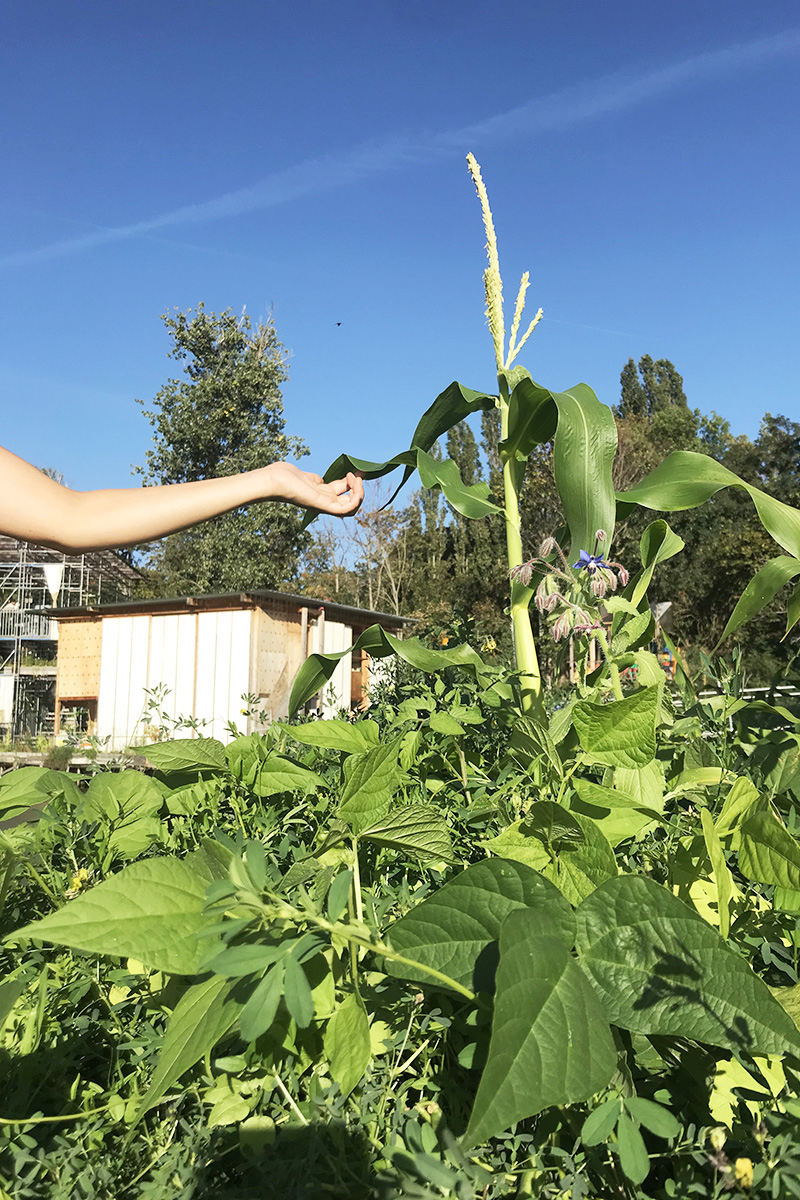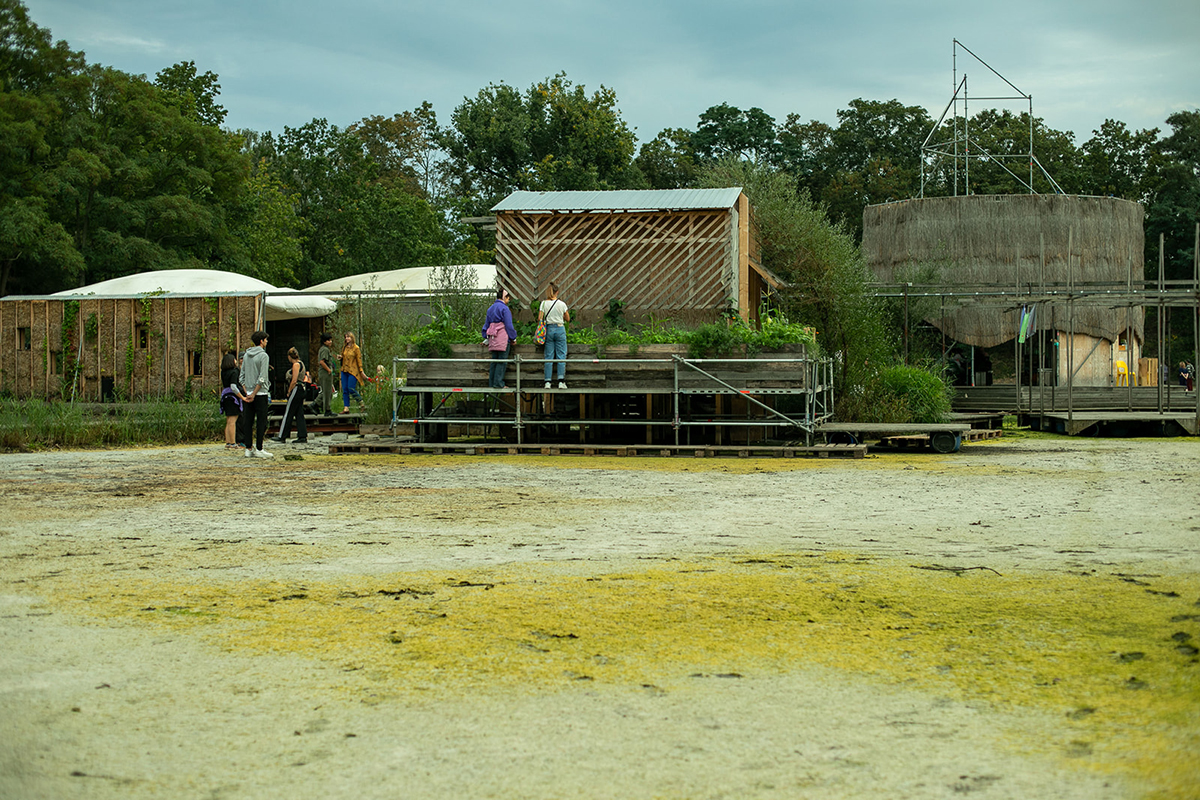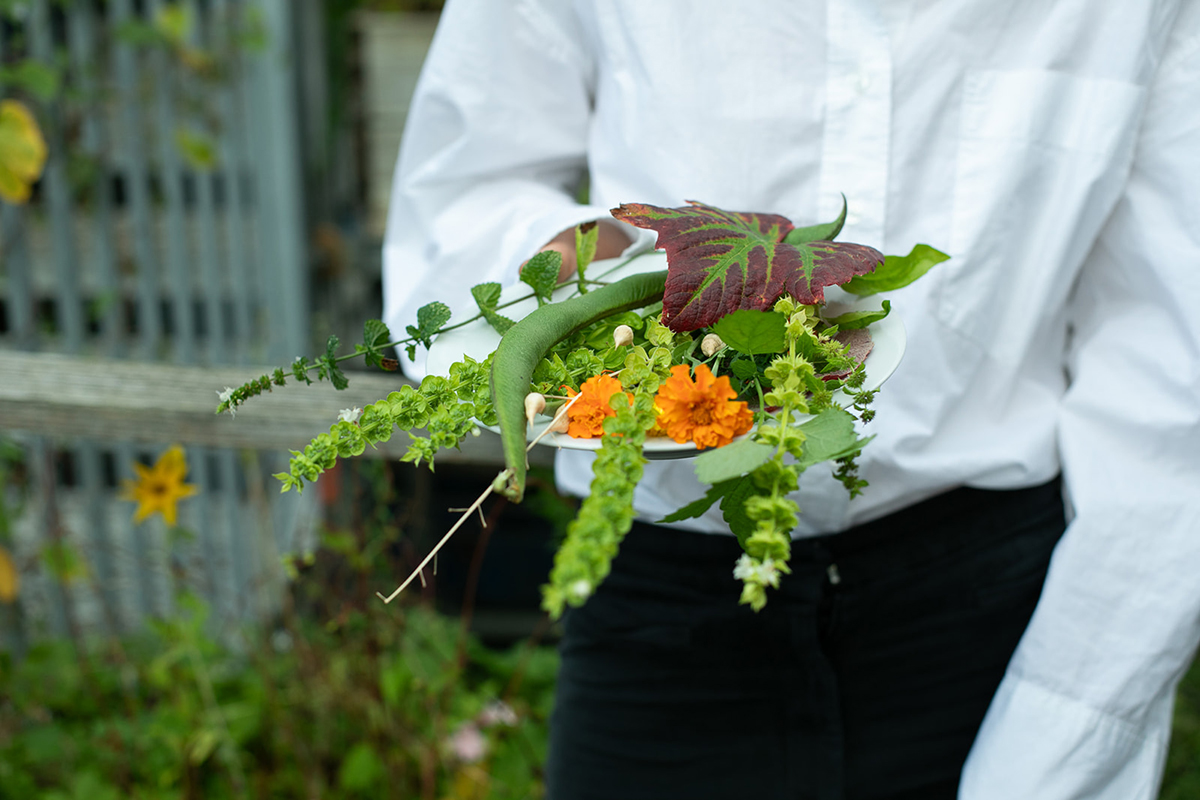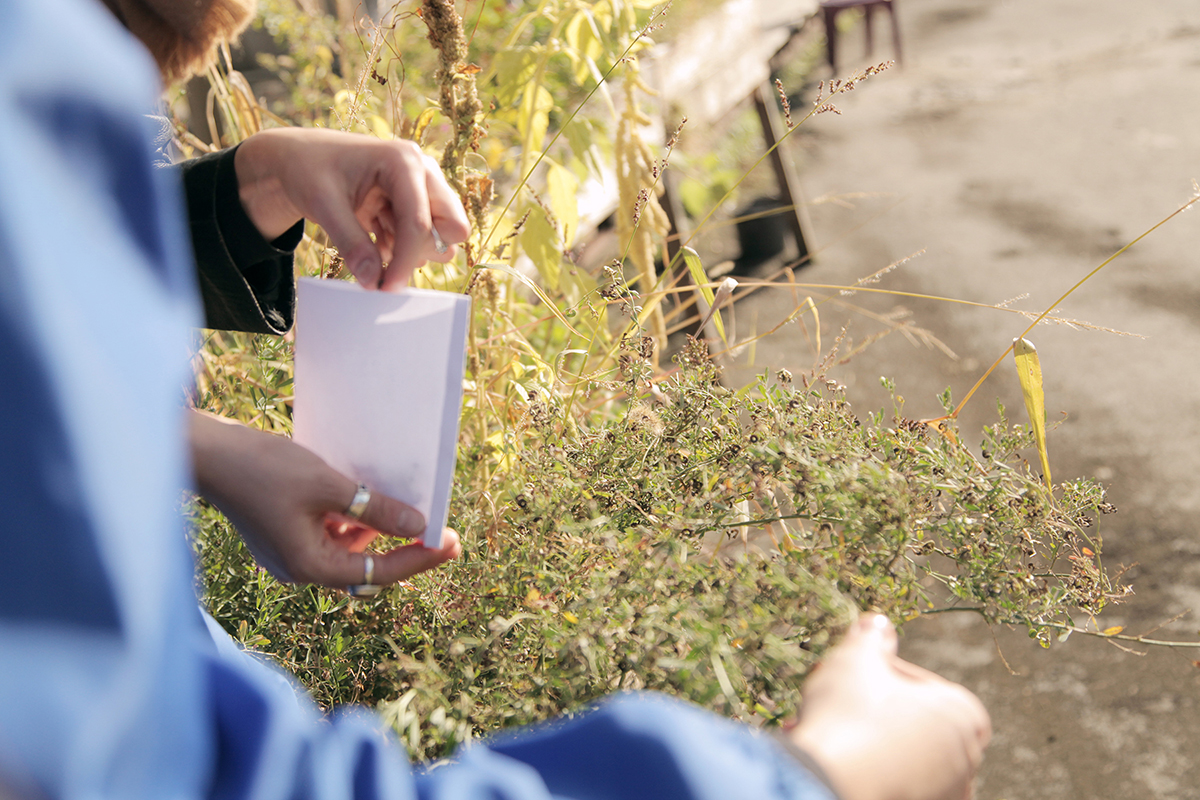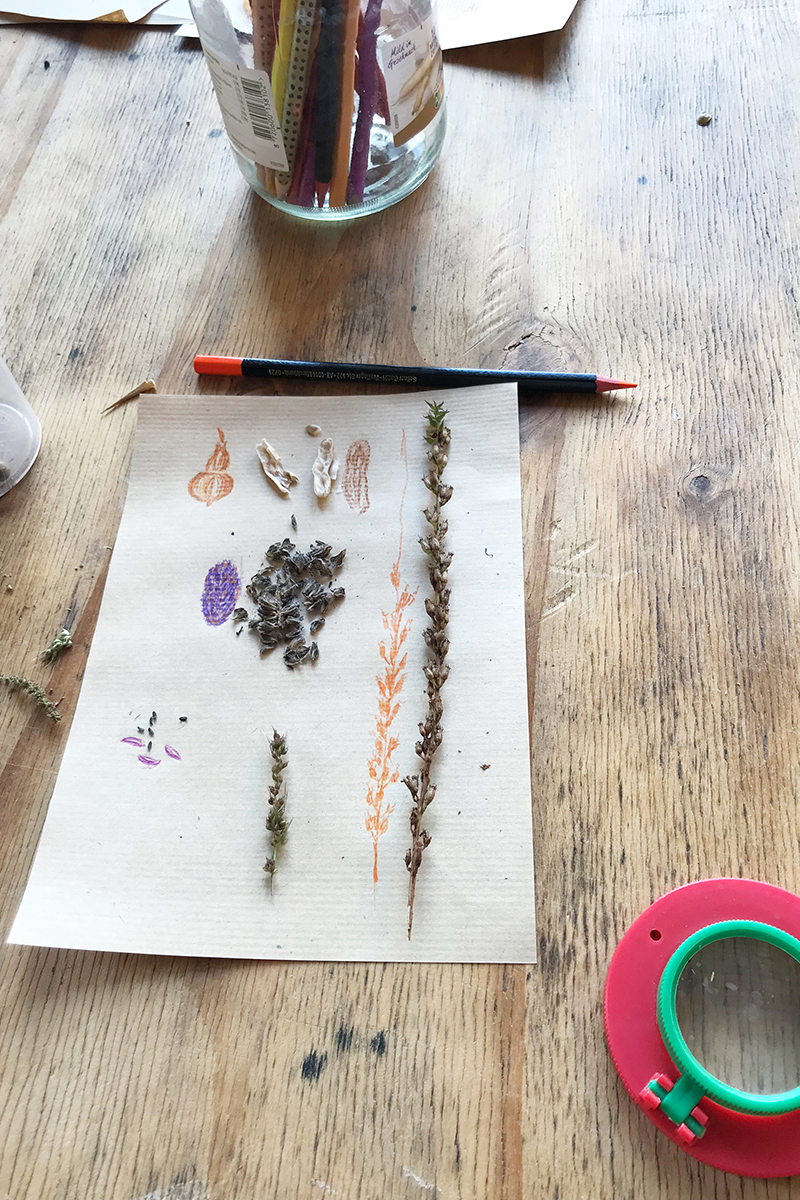Floating Gardens
Do you hear them whisper
Do you hear them sing
It’s winter and spring
Telling the infinite story
Of departure and return
We, the Floating Gardens, encounter you as a fluid body of bees, butterflies, calendula, clover, dirt, evening primroses, fire beans, fresh compost, botany practicing human(s), house martins, ipomoea, ladybugs, marigolds, mosquitoes, night moths, rainwater, vapours, voles, all kinds of weeds, whispers… We progressively explore how to interact and collaborate with the humans and their activities on site since 2019. Not all of us are association members and our dynamics change with every season.
Edible scenography in the rainwater retention basin of Tempelhofer Feld
The Floating Gardens address more-than-human agencies and narratives on site. They refer to the rainwater basin as a cohabitation space shared and constantly reshaped by amphibia, birds, fungi, insects, mammals (humans included), micro-organisms, plants, … By planting and taking care of intimate spaces within the built structure in the rainwater basin we explore how garden communities as self organised eco-infrastructures contribute to reimagining and re-creating ways of symbiotic co-living in urban spaces. Gardens embracing diversity and leaving unplanned space for self-regulation provide refuge for species that don’t settle into the built structures of urban environments.
How can we re-interpretate the notation ‘garden’ [interspecies microcosm] and the activities of ‘gardeners’ [botanical care takers, multi-species intelligence] and put its living world in focus? By observing the cycles of the life on site we focus to sow what sustains the flying insects living here: a colorful and edible buffet within the built structures of Floating University (overview of species). During late summer afternoons, the house martins and later in the evening the dwarf bats and jumping frogs sing songs about them while hunting. They don’t hunt simultaneously, do they listen to each other?
Artistic botanical care in a partially contaminated site
Celebrating oxymorons: detached from the ground, the Floating Gardens grow among others in the open-air greenhouse, testing vertical botany and at the same time trying to root botanical care into the daily Floating activities. They require constant care from humans under other restrictive circumstances because the soil in the floating planters isn’t activated by organisms living in open soils. How to keep the earth fertile without adding industrial fertiliser, what local plants nourish the insects on site, what plants form alieships and how do their roots interact, what is brought by the wind and why not to take out all weeds, how does the extreme temperature fluctuations in the microclimate of the basin influence a gentle tending? We explore creative and critical strategies on the ground to approach these and many more questions concerning an affective, imperfect, interspecies friendly and sustainable shift in self organised eco-maintenance of nature-culture spaces.
Interspecies collectivity: dynamics and ways
Not all of our actions are useful and not all of them are art; we strive for an attentive and continuous dialogue with the many ways of being alive (Morizot). How can creative botanical care be co-practiced as embodied advocacy for urban nature-culture spaces without actually intervening in the ecosystem of the site? How can botanical practice contribute to restore our human relation to the living? During the unguided open gardening sessions at Floating University the human participants apply and share methods about small-scale transformative actions in favor of sustaining and restoring urban biodiversity. So far, those informal sessions took place weekly since 2019 from April to November and give space to botanical practice as relational work, community building, knowledge exchange and reciprocal learning.
Floating Gardens programme since 2019:
2019 informal founding of the garden community
2020 Greening the Floating Iceberg
2021 Sow and Grow: Vegetable Mix
2022 What’s in the air? Learning from the Life on Site
2023 Garden communities as Green Infrastructures, Milpa High-Bed Prototype
2024 Species in partnership, food for all
So far, those informal sessions took place weekly since 2019 from April to November and give space to botanical practice as relational work with the living world, community building, knowledge exchange and reciprocal learning.
Milpa: Learning from corn, bean and squash (2023)
Lorene Blanche, Alizée Sérazin, Rosario Talevi
Early spring 2023, a milpa was installed at Floating University. We planted corn, squash and beans around the kitchen in an attempt to test the traditional Mesoamerican polyculture of corn (Zea mays L.), bean (Phaseolus spp.) and squash (Cucurbita spp.). The term “milpa” comes from the Nahuatl language (“milli,” sown field, and “pan,” on top of). Also known as the “three sisters”, the Mesoamerican agro-ecological unit embodies ideas of hybridity, reciprocity and interdependence. It is a pre-colonial subsistence system that not only offers an alternative to eurocentric monocultures, but introduces a cultural contrast: milpa as a divergent worldview, diverse, plural, interconnected in difference.
The milpa at Floating is an experiment. Growing a garden in a rainwater retention basin with a special microclimate that is affected by flash rains, contrasting humidity and extreme heat due to the concrete floor is a climate change exercise.
The milpa was an original idea of Rosario Talevi and it was commissioned to Lorene Blanche (botany) and Alizée Sérazin (construction) for Climate Care Festival 2023.
It has been built with the support of Vinzent Müller, Nils Palme, Leonard Strübin, Andrew Wu, Felix Wierschbitzki, Raul Walch, Cori Blair and Nala, Matilde Dewavrin, Benjamin Foerster-Baldenius, Florian Foerster, Joanna Hedley-Smith, and taken care of with the support of Adriana Gahona, Bees and Crows.
Did you ever count the number of umbrellas on a dandelion? Floating Seed archive (since 2022)
A living archive of the rainwater basin: Strolling around the basin we collect seeds from all kinds of plants, inventing names for those we can’t identify yet. The Floating Seed Archive documents both the plants that are part of the ecosystem on site as well as the plant selection of the Floating Gardens. The place itself is habitat to a diverse amount of plant types, especially weeds that mostly vanished from public space due to a selective practice of maintenance, even though they inherent many benefits, eg. enhancing the regeneration of the soil and as food source for insects. We continuously collect, archive, replant and multiply. Above us, wild gooses on their way South cross the airspace, filling the air with their chit chats. The seed archive supports ancient seeds only, celebrating their ancestral memory, capacities of learning and adaption to new circumstances.
Credits
Human volunteers 2019 – 2023: Adriana Gahona, Andrew Wu, Antonia Schlaich, Hannah Greven, Gilly Karjevsky, Jade Dreyfuss, Karin Weissenbrunner, Katherine Ball, KÊMI atelier (Daniela & Valentina Nadwornicek), Laureen Hünig, Lorene Blanche, Martina Kolarek, Nina Peters, Nils Palme, Pia Groleger, Sarah Yaparsidi, Sophia Tabatadze, Stefan Klopfer, Ute Lindenbeck, and many occasional participants.
Coordination 2024: Adriana Gahona
Concept and coordination 2022, 2023: Lorene Blanche
Text: Lorene Blanche
Paragraph Milpa: Rosario Talevi









